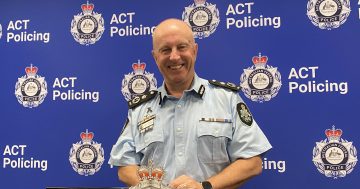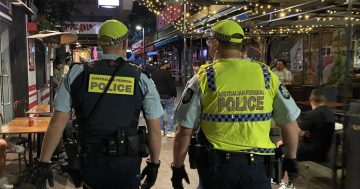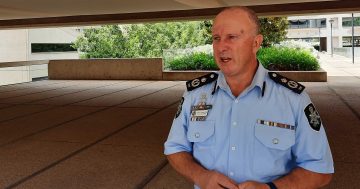
The thin blue line is overstretched and needs a boost. Photo: File.
Talk to community representatives on Canberra’s western edge or in Gungahlin in the north or Tuggeranong in the south and they will all say police are thin on the ground, and if and when they do finally turn up, it is too late.
This is no criticism of ACT Policing but a simple acknowledgment that its resources are stretched in a growing city, including border areas such as South Jerrabomberra.
It is common in conversation these days for people to observe that they don’t see too many police around.
Now there are many who might say that’s not such a bad thing, until your house is broken into or hoons are tearing up the street outside your home with the potential for a major accident if not there then somewhere else on Canberra’s roads.
No one wants to see a police officer until you need one.
The latest stats on police numbers in the Report on Government Services confirm that there a fewer sworn police per 100,000 people than anywhere else in the country, and the ACT at 205 is way below the average of 280.
The government tends to argue that the ACT’s unique situation as a city-state means comparisons with other jurisdictions are difficult.
There is some truth in that and Chief Police officer Deputy Commissioner Neil Gaughan accepts that ACT Policing does not need to be at the average, but this week he did not hold back about his officers being under the pump.
They are not only struggling to meet community needs in an increasingly complex environment, but the pressure is telling on their own health.
Less sleep, more overtime and more sick leave do not augur well for a group of people tasked with protecting the community and maintaining safety and order.
He has a figure in mind to put to the government along with some new research from PWC, which he says amounts to a compelling business case for boosting the numbers of operational police in the Territory.
The government points to falling crime rates, but this does not include unreported incidents or provide a full picture of the scope of police activities, including dealing with more domestic violence and mental health issues.
The government has also focused on the other side of the equation when it comes to crime and anti-social behaviour, saying that more police is not the only answer.
It wants to prevent re-offending through diversion programs, restorative justice and justice reinvestment programs.
In a jurisdiction where it is known that a small and identifiable group of offenders are responsible for the bulk of property theft and other crime, and the cost of its overcrowded prison is soaring, this makes sense.
But just having a police presence in an area can prevent crime and poor behaviour in the first place.
The government says its reforms are delivering more officers, and there will be more to come, but as Deputy Commissioner Gaughan says, ACT Policing is playing catch-up from a long way back.
“In the last 10 years, the population of the ACT has grown 19 per cent. Police numbers in raw data have gone down by 0.7 per cent. So we’ve actually gone backwards,” he says.
Not one given to hyperbole, the CPO says the situation is at a tipping point.
The government needs to listen and invest appropriately at the next Budget to lift police numbers to a level that will allow them to do their job as the city continues to expand.




















